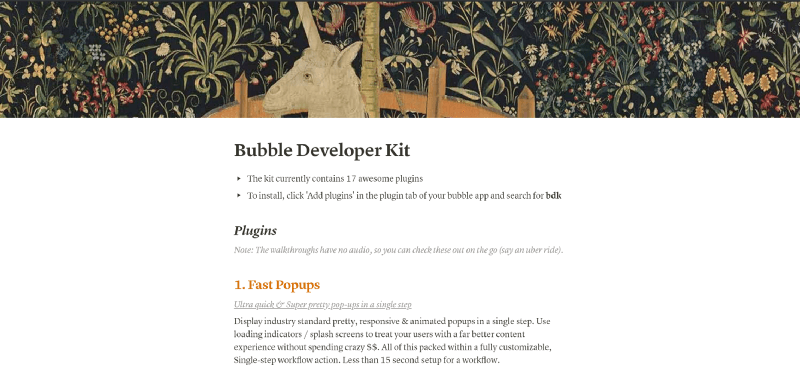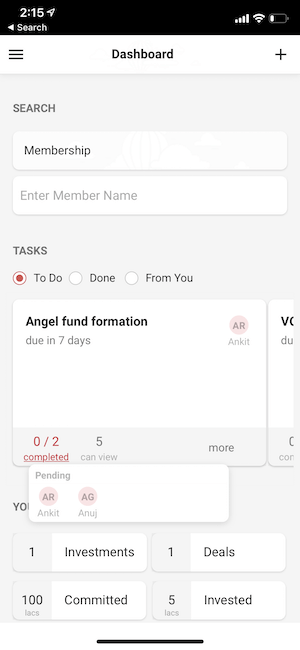How did you get started with Bubble?
I started using Bubble out of necessity. I was at Stanford doing my MBA. I had this idea for social ride sharing app around the time Uber Pool was launching. I was not a coder and didn’t have financial resources to hire one — certainly not in Palo Alto. My classmate told me about a workshop in Berkeley that will help you build a product in 24 hours. It was actually possible. The first time I changed things in the development version in Bubble and it appeared on the page, it was magic. It was like Steve Jobs’s mouse moment. At the end of the workshop, I spoke to the 2 guys — they were Andrew Haller and Vlad Leytus. They turned out to be MBAs from Harvard rather than the coders I expected. Though an early adopter, I’m not good at believing things immediately. Seated in a the ‘Startup Garage’ class, I built the online site for a parcel delivery startup idea within 2 class sessions. Remember, I didn’t know how to code. Bubble helped me skip the ‘napkin prototype’ phase entirely. It was a validation of Bubble’s ease of use & speed. Today, a lot more students in Startup Garage are exploring Bubble. It’s quite empowering.
After graduating, I went to San Francisco to interview with Uber. On the way back I met Andrew & Vlad. AirDev was now a real company with awesome clients. They were looking for someone to join them and help grow the agency. On one hand, there are large tech companies with ready products. On another, there’s this new tech startup that can help me build such products. Being an immigrant, the latter option carried visa risk if either Bubble or AirDev failed but the product was compelling. Knowing that the founders came from similar consulting and operations backgrounds gave confidence. I took the leap of faith. I was now responsible for building and maintaining product for Dividend Finance, one of AirDev’s clients which was growing exponentially. Traditional development proved too slow for iterations that come with such a rapidly growing business. Fast forward 3 years. Dividend is one of the industry leaders in Home Improvement Financing with over 100 employees and $365 million in financing facilities. Bubble clearly works well at scale.

How did you switch from Product Lead to Plugin Developer?
In late 2017, I had a startup idea in Cryptocurrency space. By now, I stopped watching TV and started Bubbling even after coming home. However, I needed features like complex matching, calculations and arrays — you could do all of those in Bubble but not to the extent I wanted. Thanks to student loans, I started learning JavaScript. I was hoping to build it using Node with Bubble powering just the front-end UI but Bubble is so easy and powerful to think through that I ended up building the app on it. For code, I just wrapped it into a plugin. At the time, I never intended to work on non-custom plugins and publish them. I moved back to India 6 months ago for personal reasons just when regulations changed to prohibit crypto startups there.
My ‘pacific time’ job continued to be managing the client platform for AirDev. But now my ‘TV time’ was available. I started thinking through cool plugins I had or could build for myself. Surely there were a few who would find stuff like Slideable Menu or Environment Variables plugins useful. Quickly came up with a Trello-style board. This developer kit idea originated with a simple objective: “A good Bubble developer shouldn’t feel like they lack some tool or feature. You want to feel confident and in control.” I try my best to put together documentation in a way that users can watch the demo and do it themselves. The community has been extremely supportive. I get ideas from several members on the forum, motivating me to continue adding more things to the kit.
Taking a macro view, how does your formalized curriculum on startups in business school apply to the real world experience of working at one?
In business school, there are a lot of courses where you are required to test out your ideas on the field. You’re trying to figure out the underlying practical pain points to find startup ideas. Let’s say you’re building out a food delivery app. Level 1 understanding is stuff like unit economics, user needs and business model. The second level understanding is what a business / product leader needs. It is about real execution. In this case, consider problems like too many people coming to pick up food orders. Or making sure a customer doesn’t have two consecutive 3-star experiences. In a startup, you need to be able to identify and account for all such needs to move beyond early testers. In the current era, nearly every business has or wants online operations that sync with offline operations.
Clarity is critical. When you build in a visual programming framework, you are forcing your mind to gain clarity about the idea in depth. For instance, the Q&A that goes through your mind while building using Bubble is not very different than for drawing flowcharts or writing algorithmic instructions. Tools like Bubble help you shift that cognitive load from coding to understanding your business. Having worked on multiple client apps at AirDev, I can now think quicker about potential issues a business can face. Just start with “if I build an app corresponding to these operations in the Bubble”. Do this on several apps and you can call yourself a pretty good product manager who can speak the language of both engineers and business folks.
The other thing is about conviction. A lot of people including me get excited about a new idea every week. The ability to finish an early version and test it in 2 weeks is a critical asset. While doing this you explore the idea in depth. It helps in deciding whether you are more interested in the business or in the challenge of building something new. Working at startups taught me I’m the latter type. For me, it didn’t make practical sense going into a traditional dev shop. A startup would expand my skills and help me discover what I really like to do. Building things for others accelerates the process. If you already know what you’re passionate about — even directionally — I highly recommend exploring an early stage startup with a small team. Being a part of the journey while it’s being built is incredibly fulfilling.

What’s your next cool idea and how can Bubble help?
I’m a co-founder at what is now Asia’s 3rd largest and India’s largest Angel investor network. We turn 3 years old next week. In 2018, we invested $200K-$2mil each in 57 startups. Last quarter we realized we couldn’t handle the growth anymore without a custom tech platform for our private network of investors, startups and partners across Asia & Middle East. This platform could free up a lot of management, communication & coordination bandwidth for our team, enabling us to expand into Europe. We made a strategic decision to build this on Bubble. Cost was not a deciding factor for us. I believe the real competitive advantage of Bubble is the ability to iterate as fast as your users’ needs. We are launching the new platform to our users and leads this month!
Bubble team can help on 2 fronts — Native apps and UX. In this part of the world, barely anyone uses desktop. When I try to explain web apps, people ask me where is the ‘App’ app? For consumer products, a native solution is even more essential to manage costs and retain complete control of the product by a development team. UX capabilities such as a Bootstrap-like framework for responsive design, cool layouts and animations are another need of the hour. This will push people beyond their ‘beta stage UX’ into visually appealing production grade UX. I also hope to see a much larger Bubble community in India in the coming years. The narrative used to be — you can do everything in code so what can you do in Bubble? Now it’s — you can do so much in Bubble so what can you supplement with code?
Build your app on Bubble's Free plan. No need to upgrade until you're ready to launch your app.
Join Bubble




